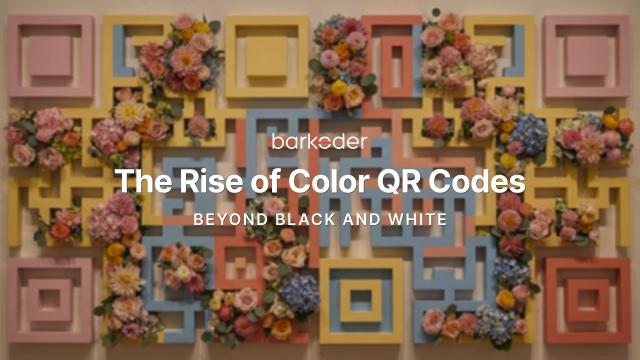
How barcodes are utilized in labs
There is no doubt that barcodes are powerful tools. Integrating them into the workflows of your medical care facilities, healthcare manufacturing processes and pharmacies can significantly increase the productivity of your personnel, leading to a reduced business cost across the board. You can empower your documentation to provide a quick access to all healthcare professionals to crucial information such as therapy details and intake, illness and general histories of patients and so much more, bringing new levels of awareness and ability for quick reactions by having less downtime.
Moreover, in the current context of the ongoing Covid-19 pandemic, barcodes offer an efficient means of enhancing security measures. They can be used to swiftly and easily verify visitor authenticity and validate vaccination certificates, ensuring a safe and secure environment for both staff and patients.
By harnessing the power of barcodes, you can streamline operations, optimize efficiency, and enhance the overall quality of care and security within your medical care facilities, healthcare manufacturing processes, and pharmacies.
Samples, specimens, and other laboratory items are tracked efficiently and accurately using barcodes in medical laboratories. They are widely used for streamlining workflows, minimizing errors, and improving patient safety. In medical laboratories, barcodes are used as follows:
- Sample Identification: Barcodes are used for labeling and tracking individual patient samples, such as blood, urine, tissue, or other bodily fluids. In addition to the patient ID, test type, and specimen details, every sample is assigned a unique barcode. During the testing process, barcoded labels are affixed to sample containers or tubes to ensure accurate identification.
- Tracking specimens: Barcodes allow systematic tracking of specimens from collection to processing, testing, and storage. As samples move through different stages of the laboratory workflow, barcode scanners are used to capture and update the sample's status in the laboratory information management system (LIMS), sometimes referred to as a laboratory information system (LIS). This helps in reducing manual errors, ensuring traceability, and maintaining sample integrity.
- Test Request Entry: When a healthcare provider requests laboratory tests for a patient, barcodes are often used to enter the test orders into the laboratory information system (LIS). By scanning the barcode on the patient's identification wristband or requisition form, the system can automatically link the correct patient information and requested tests. This ensures accurate data entry and minimizes the risk of errors or mix-ups.
- Inventory Management: Barcodes are utilized for managing laboratory inventory, including reagents, supplies, and equipment. Each item is labeled with a unique barcode, enabling easy tracking, stock management, and automated reordering. By scanning the barcode during inventory transactions, such as receiving, distribution, or restocking, the system can maintain an accurate record of stock levels and usage.
- Quality Control and Validation: Barcodes are used during quality control processes to validate the accuracy of test results. Control samples with known values are labeled with barcodes and processed alongside patient samples. By scanning the barcode, the system can verify that the correct control sample was used and compare the results obtained against the expected values.

A large number of barcodes or IDs on a sample?
The number of barcodes or identifiers present in a sample can vary. Assigning multiple identification markers to a single sample in certain scenarios may be necessary or advantageous in certain cases.
Multiple barcodes or identifiers for a sample can be beneficial in different laboratory settings A research facility has the ability to label samples with multiple barcodes or identifiers at different stages of the experimental process. This makes it possible to better monitor and monitor the progress of the sample and ensures accurate documentation.
A sample in complex supply chains or logistics operations may acquire multiple barcodes or identifiers as it moves through different stages or locations. This makes it possible to keep a complete record of the sample route and facilitates effective follow-up and screening.
A well-organized system is vital for managing and reconciling the multiple barcodes or identifiers associated with a sample. Laboratory information management systems (LIMS) can play a vital role in ensuring proper tracking and synchronization of these identifiers.
By employing multiple barcodes or identifiers, laboratories can enhance their sample management processes, improve accuracy, and streamline operations across various workflows.

Digitalization with one application.
To convert barcodes into text value using the camera, it is necessary to download a barcode scanning app onto your phone/tablet. Choosing the right SDK ensures a quick time to market while lowering development and maintenance costs. High scanning accuracy also means satisfied end users and higher overall customer satisfaction.
barKoder's Mobile Barcode Scanner SDK is dependable and productive for all developers and enterprises, with a world-class barcode detection algorithm and camera enhancement functionality.
- Barcode Scanner by barKoder for Android on Google Play Store
- Barcode Scanner by barKoder for iOS on Apple App Store
- Try the amazingly fast Android barcode scanner SDK by barKoder
- Fully customizable, reliable, and lightning-fast barcode reader SDK for IOS by barKoder
- barKoder's mobile barcode recognition SDK for Flutter






